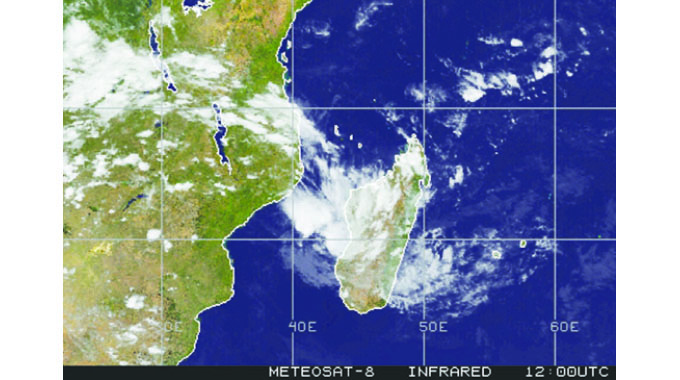EDITORIAL COMMENT:Prepare for the downside of good rains

WITH what we all hope will be a good rainy season, as provisionally forecast, having started well, we also need to take precautions over adverse weather, as well as count our blessings when we get good weather.
The Meteorological Services Department can list the dangers, and even give some indication of how often we may face them in a season, but it deals with statistics.
It can tell us that around five of the more than 10 tropical cyclones and named storms in the southeast Indian Ocean are likely to affect Zimbabwe, but it cannot tell us until very close to the day where and when the cyclones are likely to enter Zimbabwe, how powerful they will be, and what is their likely route across Zimbabwe.
So we need to be prepared. A cyclone, and many do, could just end up as a tropical low pressure system bringing some welcome extra rain, with the main danger being the sort of flash flooding that we get whenever there are strong storms, or it could be something like Cyclone Idai, the worst for half a century, or anything in between.
Since Idai, we, and especially the Department of Civil Protection, have upgraded our early warning systems, our response systems and what is needed to ensure we can survive such a cyclone without anyone dying.
While people do prepare for the worst, no one knew what the worst was until Idai hit. Now we do, so we can be ready.
Since Idai, there has been the odd lower-intensity cyclone reaching Zimbabwe, and the new upgraded civil protection systems were quickly swung into action, with the early warning networks, the prepositioned supplies so food and medicine would be available if roads or bridges were damaged or destroyed, the buses to evacuate those wanting or needing to be moved, and deployed helicopters from the Air Force of Zimbabwe.
We have not had a storm bad enough to need a compulsory evacuation order, although there have been a couple where the facilities were put in place for a voluntary move.
In other words, the worst that would happen was that some houses would be damaged and some people would get very wet, but with the other precautions no one would be swept away or drowned, so people could choose.
The compulsory evacuations are ordered for something like Idai, when we need to get people into safer places promptly before they drown. But besides cyclones there are many other downsides even to the best rainy season.
Lightning is a perennial danger, although Zimbabweans are taking this more seriously in recent years and following the sound scientific advice that we get, basically summed up as do not take chances.
People should get into shelter, and the growing spread of modern housing in rural as well as urban areas means that more shelter is available. Lightning hitting a sound masonry building is frightening, but not lethal.
And cars are a near perfect metal box, and so one of the safest places to be sitting, but if it is a pickup then in the cab, not the back.
A simple lightning conductor using fencing wire was designed by a practical expert in the 1980s after they were horrified by the annual toll, and such a cheap, but effective solution is worth being applied.
Also the discovery that most deaths came from being in a charged field next to a near miss, rather than being hit directly changed the advice for those caught out in the open from lying down to squatting to minimise both their height and the area their body covers on the ground.
Hail falls somewhere every year. And even on the day, all the Met Department, after looking at the sort of cloud involved, can predict is a chance, or a good chance, of hail in particular areas.
They cannot tell in advance whose farm will be hit and when. This is why hail insurance, especially for high-value vulnerable crops like tobacco, is so important.
The insurance works on the basis that any individual farmer is extremely unlikely to be hit, but when they are they can be wiped out. So everyone chips in with a very small sum, and the couple of dozen farmers who are hammered can be compensated.
Storms and heavy showers produce their usual results, a lot of runoff. This fills streams and they fill rivers, which rise as a result and sometimes expand their banks and sometimes flood low-lying bridges.
And this can happen quickly, that is why we call them flash floods. So people should not be living right next to a stream or a river, and drivers when they see water flowing over a bridge deck, no matter how shallow it seems, should not cross the bridge.
Even a few centimetres can create very strong flows that can force quite heavy vehicles off a bridge.
Many urban people every year are startled just how much water can flow down the storm water drains outside their house, and many wish they had cleared the drain as it passed their property and before it sent a river down into their garden and home.
As with all precautions, let’s do the work before the flood is required, rather than wishing you had done it a bit earlier when a minor river flows through your house.
Farmers tend to be better prepared, possibly because they live and breathe weather. Many, for example, have now worked out how to use contours and other ridges to channel water to where they want it, so they can keep their flood water in the ground for the weeks when it simply does not rain but their crops can then still grow.
But even so they also have waterlogged land at times, because they too skipped like their urban cousin, in digging or clearing a drain.
While newcomers to a plot or a farm may be caught short, anyone experiencing their second rainy season at the same address should have a very good idea of just what the problems could be, and should be prepared.
We all know weather is unpredictable. But daily forecasts tell us if rain, thunder or hail is a possibility in our area. When something more serious, like a cyclone appears, as much warning as possible is given and we can get both expert advice and some serious help.
We can all minimise damage and risk simply by taking general and specific advice and then doing what is recommended.










Comments